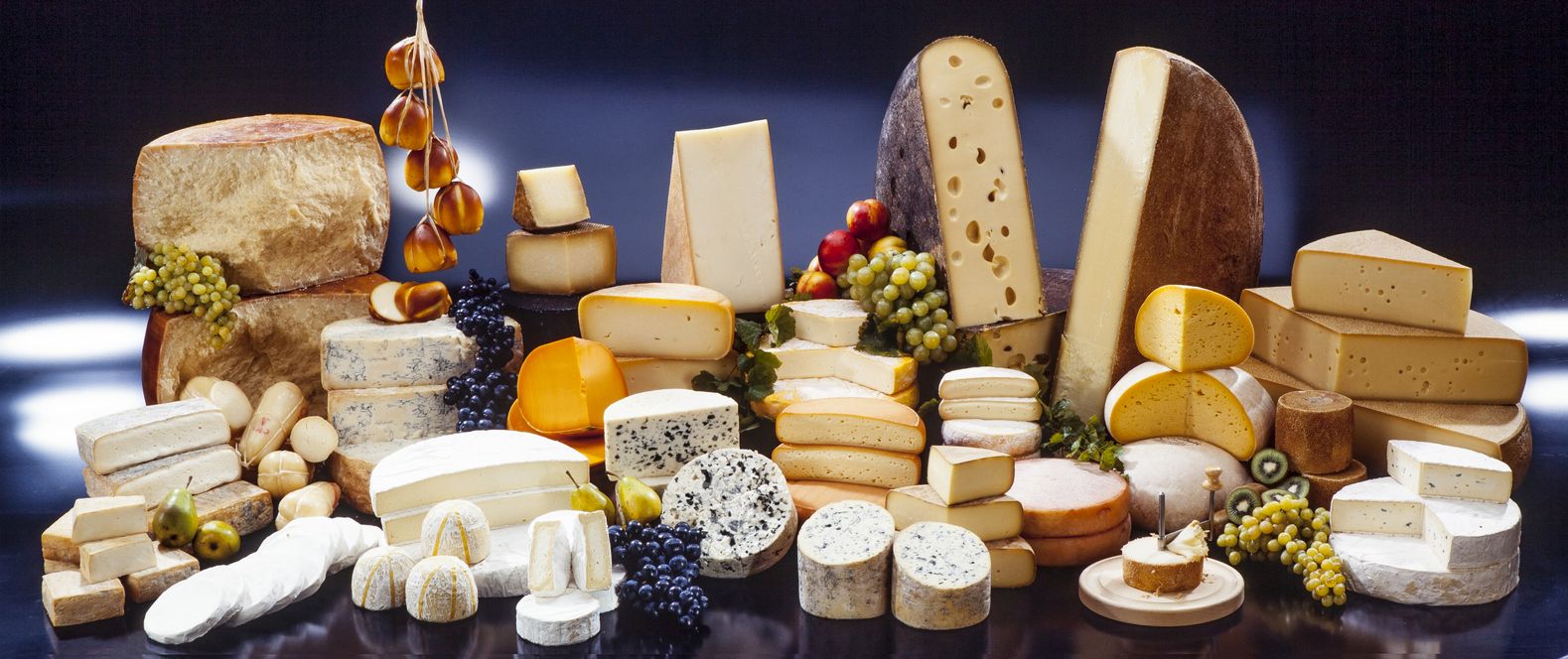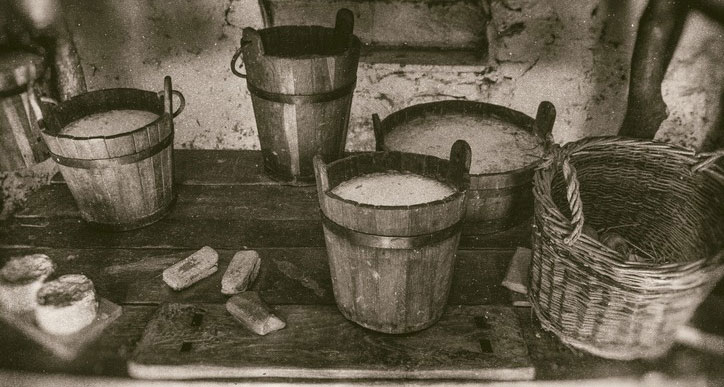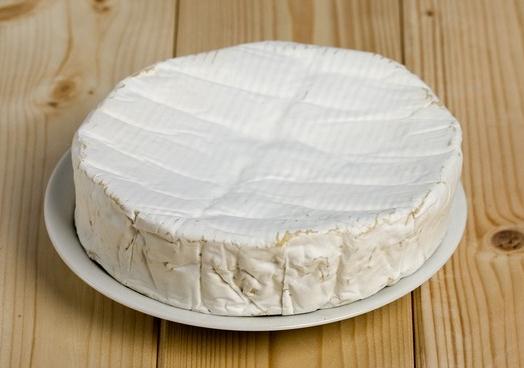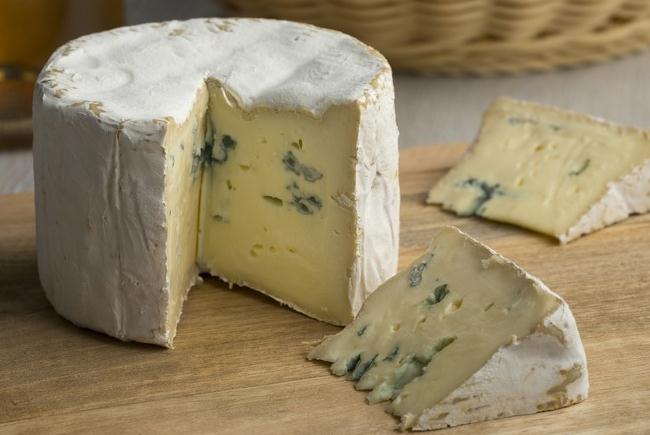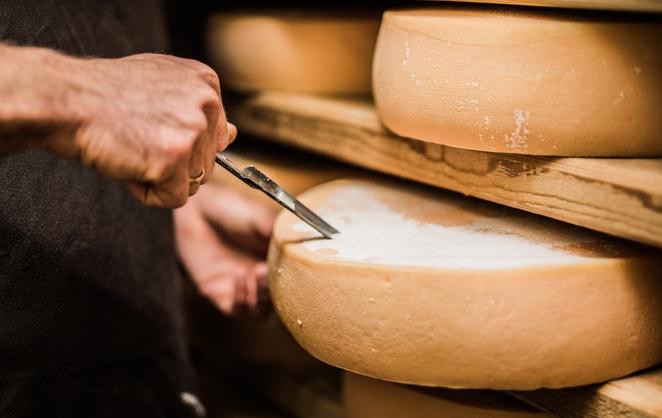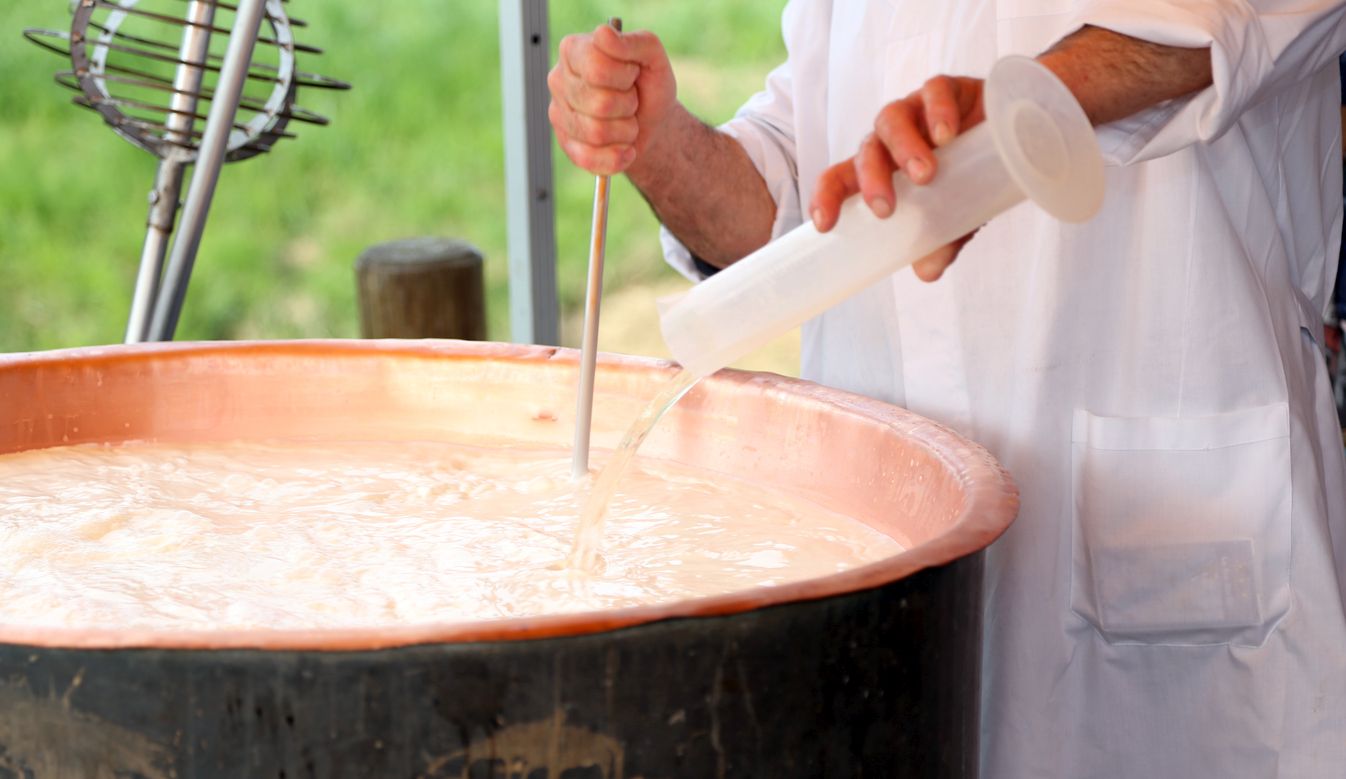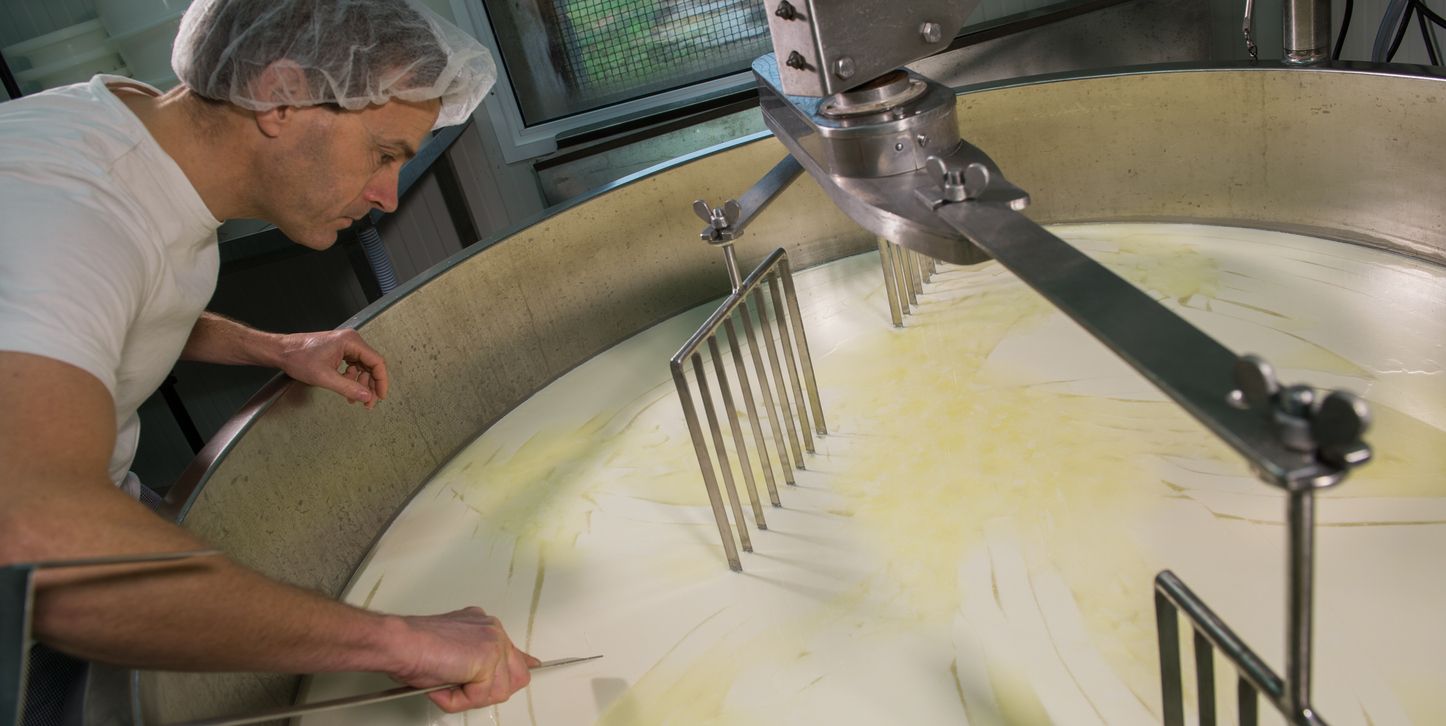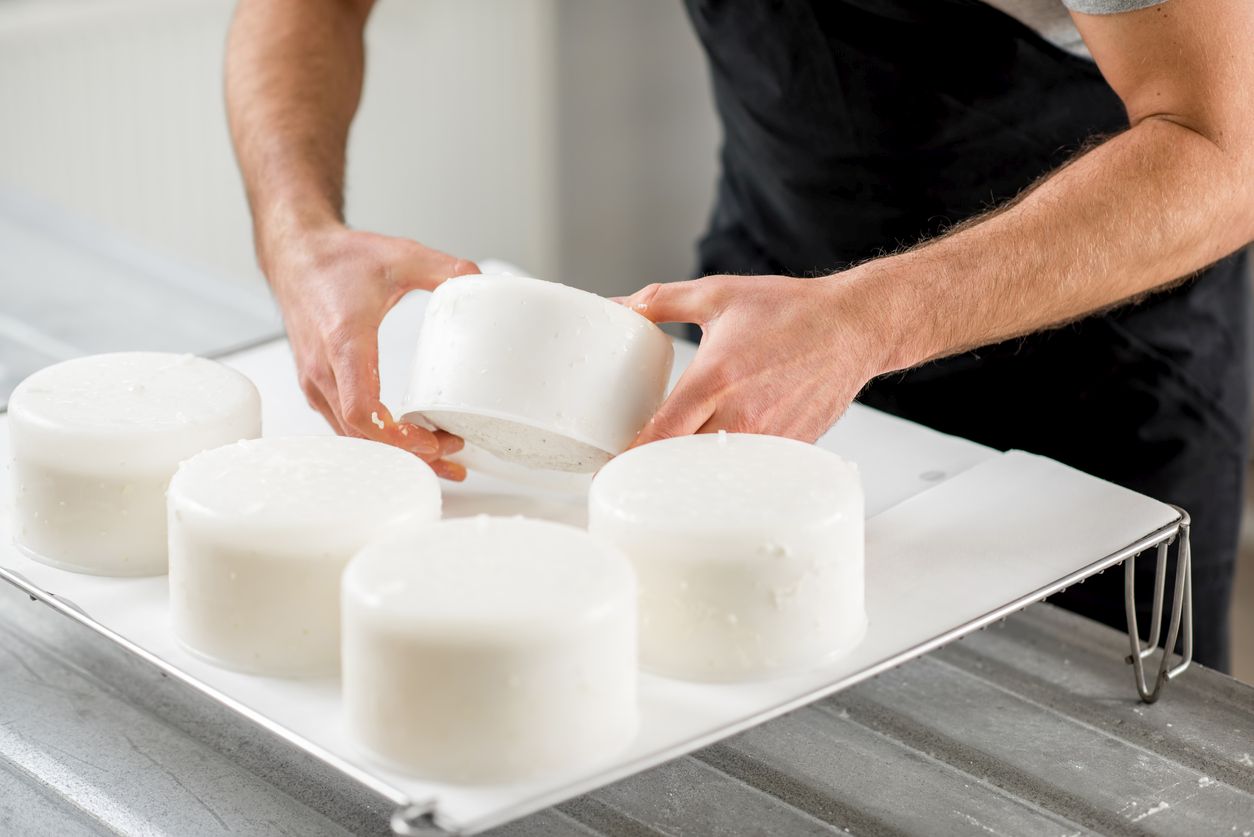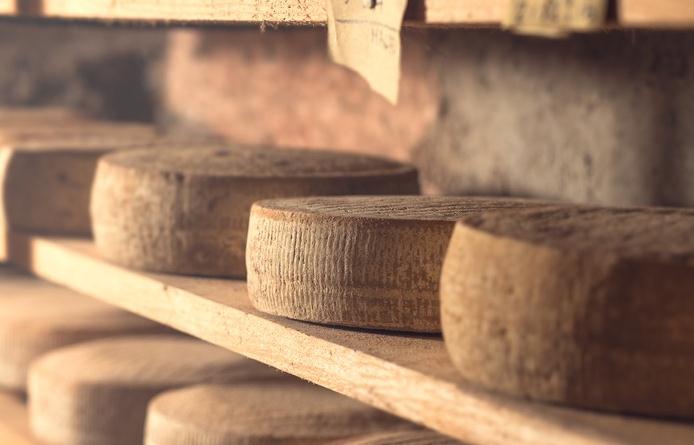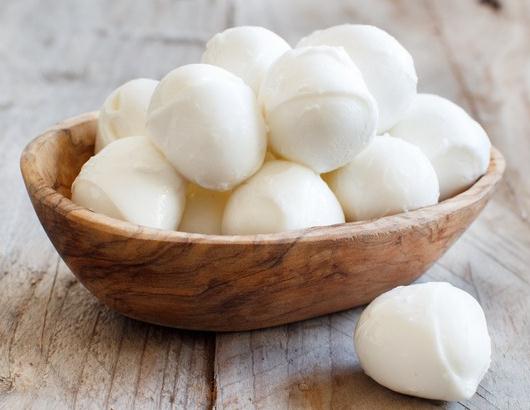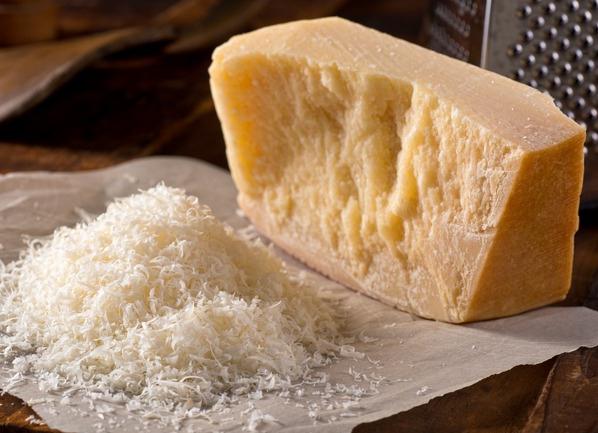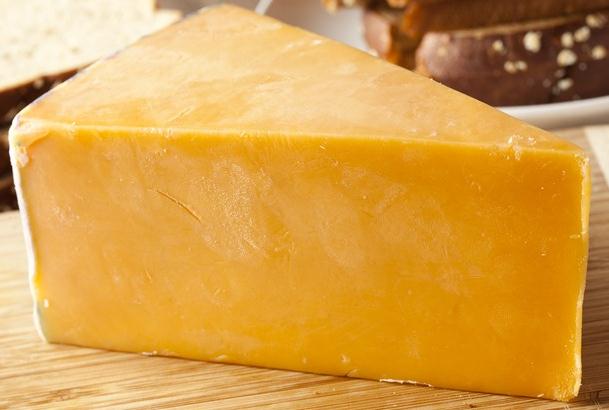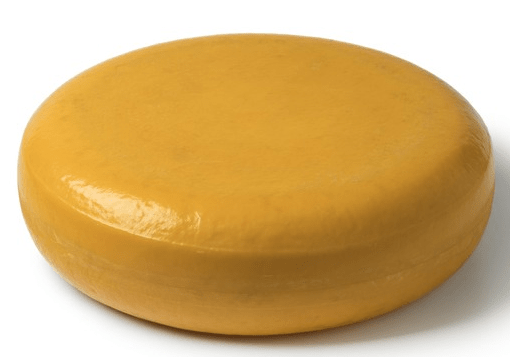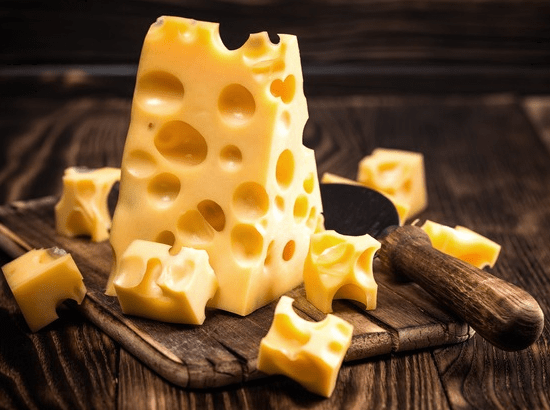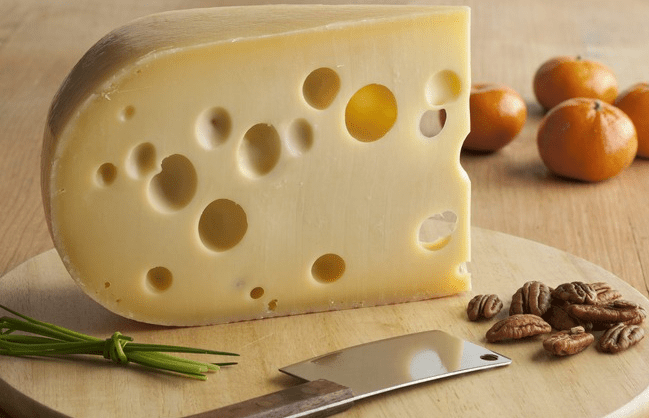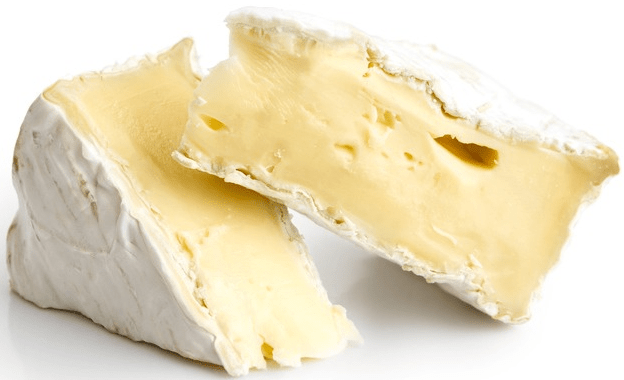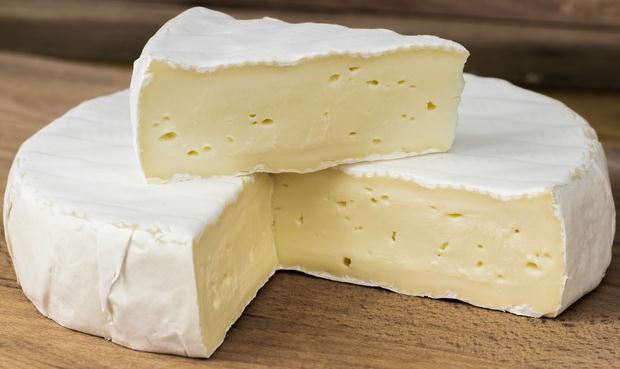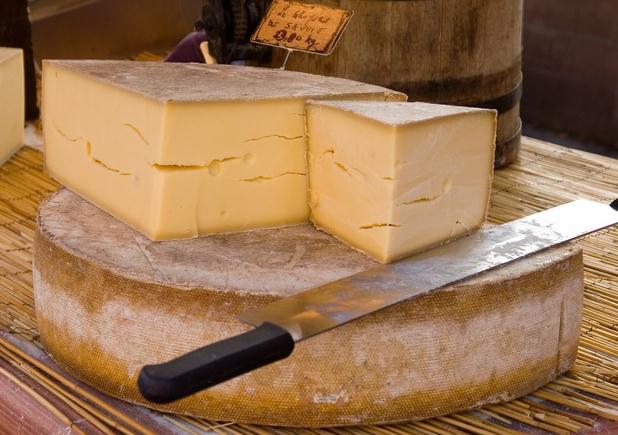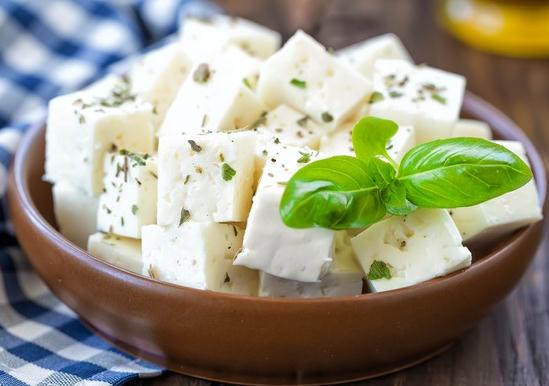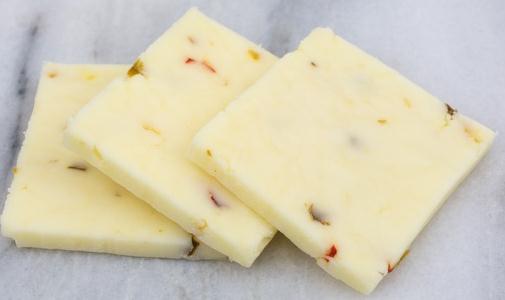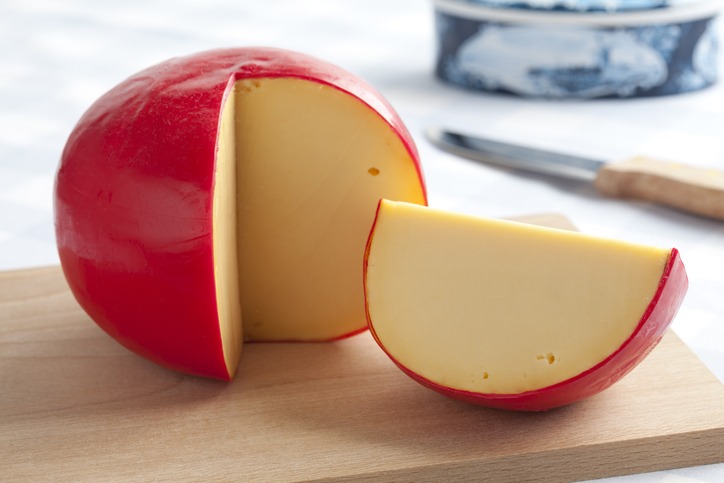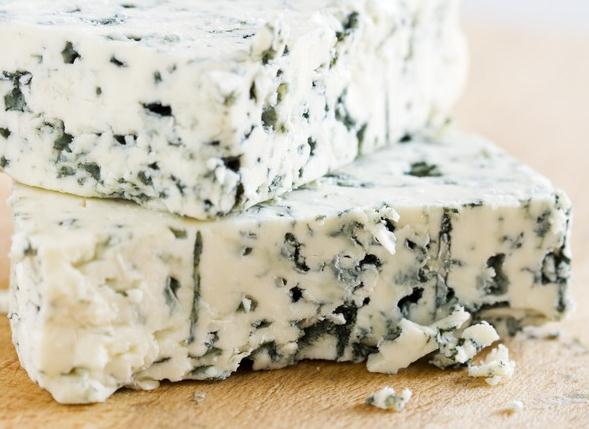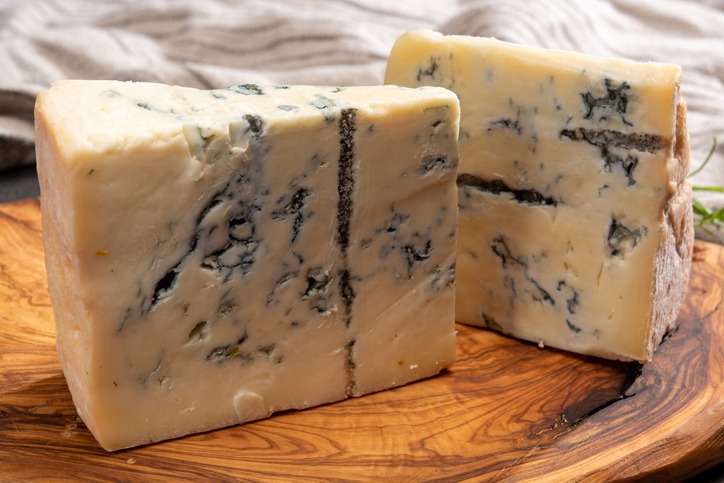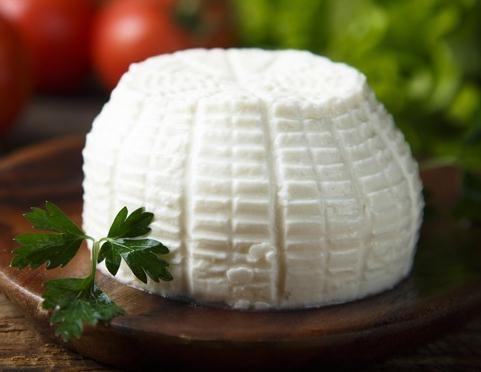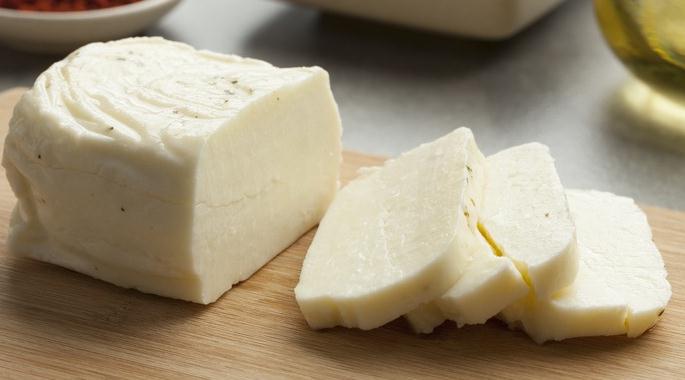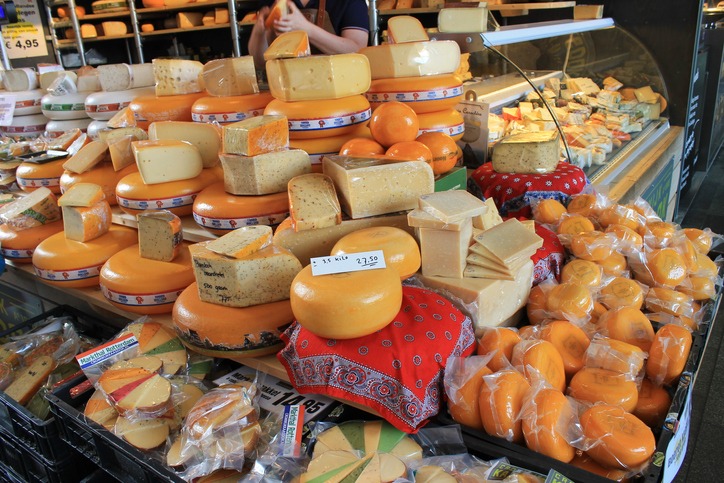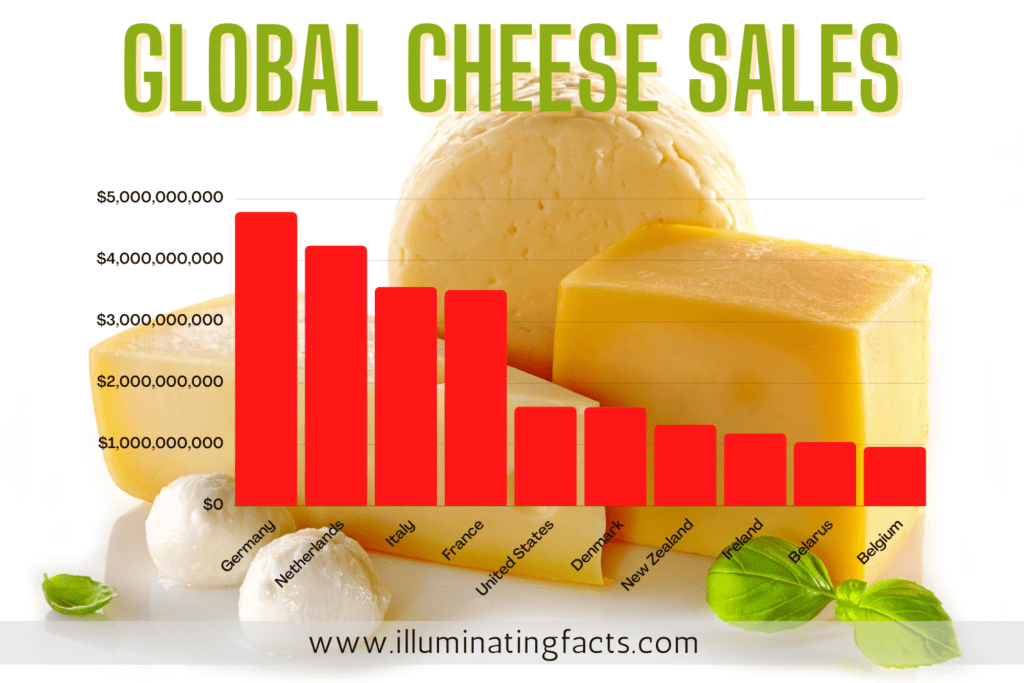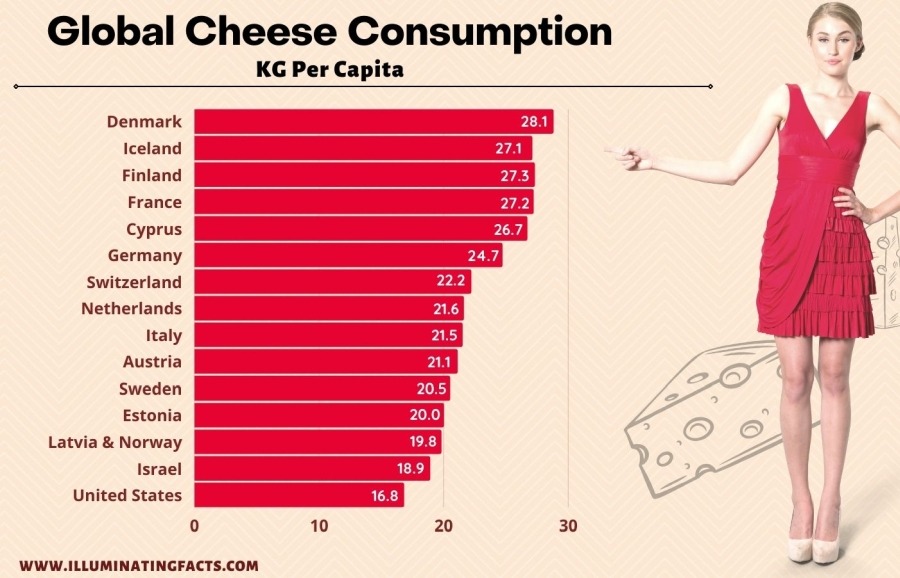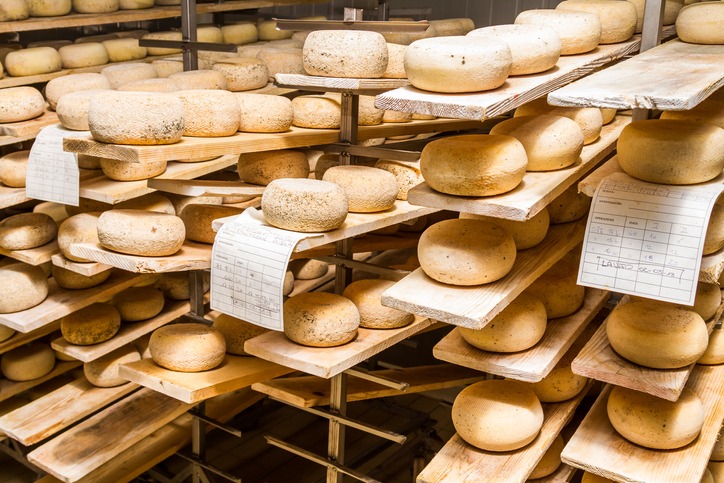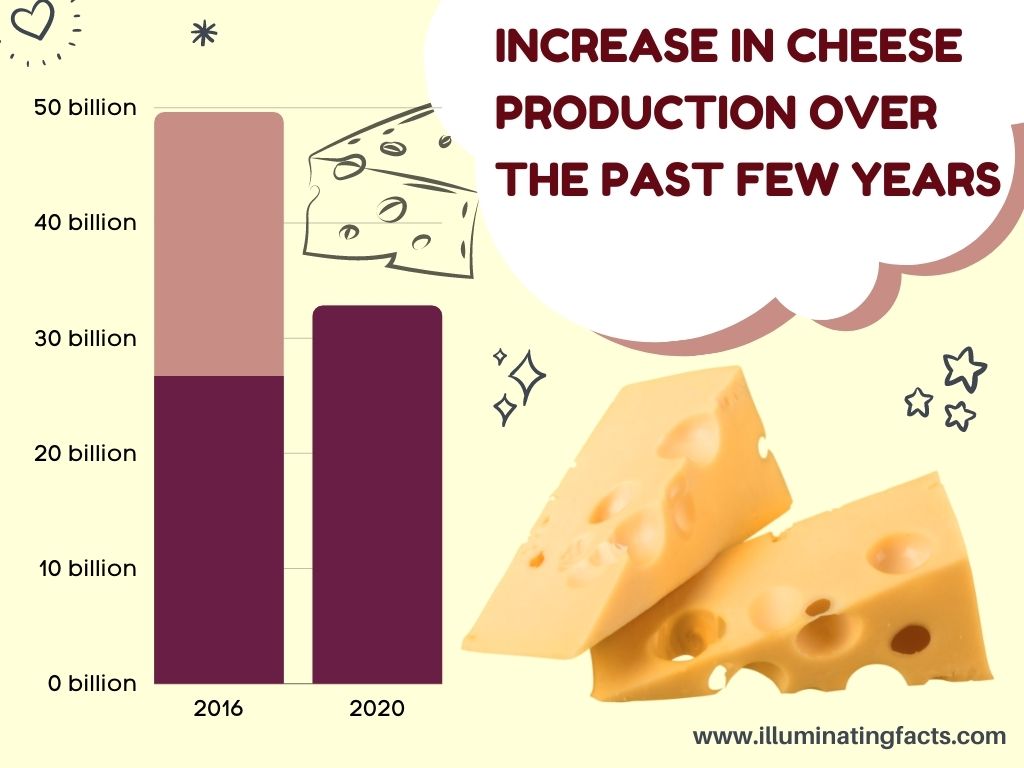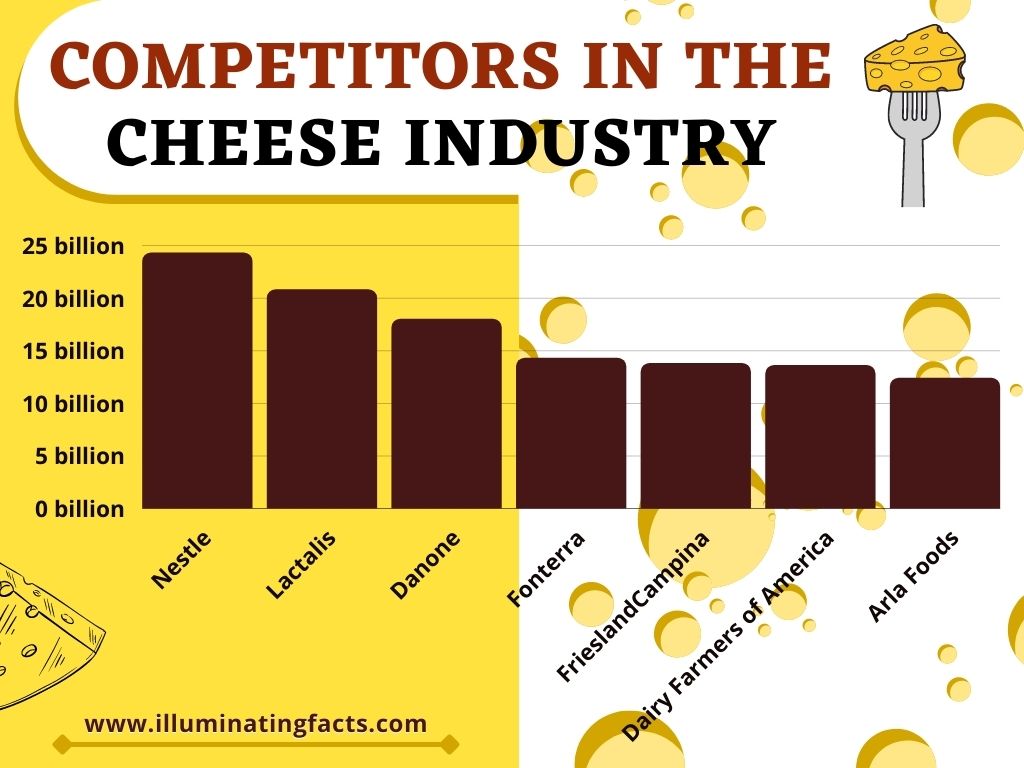Background
Cheese is a type of dairy product that is known all over the world. It is used as an ingredient to cook different types of dishes and to make sauces as well. In addition to that, cheese is also great as a standalone snack or paired with crackers, meat, fruits, and wine. Because of its popularity, cheese has a surprisingly huge impact on the world’s economy.
This post will cover all things about cheese, including its history, the different types, and how it is made. There will be numerical data and visualization to present the global sales, global consumption, increase in production over the past few years, and competitors in the cheese industry. Furthermore, many interesting cheese facts will also be presented.
History of Cheese
The term cheese is from the Latin word caseus, which is the root of the proto-Indo-European word “kwat,” which means to ferment or to become sour. Prior to refrigeration, cheese was the way people preserved milk. It is unclear when cheese production began, but there is evidence that shows early cheesemaking first appeared in Europe, Central Asia, and the Middle East.[1]
Cheese in the Ancient Times
People have enjoyed cheese for thousands of years. Some believe that cheese production was accidentally discovered when milk was kept in the stomach of sheep and curdled by rennet, which is an enzyme found in the stomach lining. Others believe that it was discovered when milk was salted or sprinkled with acid, which also caused the milk to curdle.[2] The milk curds were strained, then preserved with salt, creating a version of the cheese we know and enjoy today.[1]
Goat’s milk or sheep’s milk was the very first milk used for cheese because they were the most popular in the Mediterranean areas of the Fertile Crescent. In fact, there are ancient Sumerian records that date as far back as 4000 BCE, which showed that they ate cheese. Even ancient Egyptians were fond of cheese, as evidenced in the cheesy remains found in clay pots that date back to 2300 BCE.[2]
Cheese in Europe
Eventually, cheesemaking flourished in Europe and became a staple food in many European countries. In fact, in 1620, cheese was included in the Mayflower’s supplies by the Pilgrims when they voyaged to America. With this, cheesemaking quickly spread to the New World but remained a local farm industry until the 19th century.[3]
As cheesemaking reached the cooler climates of Northern Europe, less salt was needed for preservation. This resulted in cheeses being creamier and milder. The invention of aged, blue, and ripened cheeses began in these places. In fact, many of the cheeses that we are familiar with and fond of today were first produced in Europe during the Middle Ages. These include parmesan, gouda, camembert, and cheddar.[1]
Cheese in the Modern Times
The first-ever cheese factory was built in Switzerland back in 1815. It was only during this time that mass production of cheese started. After scientists found out how to mass-produce rennet, the production of industrial cheese became very popular.[1] Cheese production took off in the United States during the mid-1850s when Jesse Williams, a dairy farmer from upstate New York, began making cheese by using the milk he bought from nearby farms. In the following years, hundreds of dairy associations were built, with the majority in the northeast and in Wisconsin.[4]
The United States is also famously known for inventing processed cheese. It is a type of cheese that combines natural cheese with emulsifiers, flavoring, stabilizers, milk, and coloring. It is an inexpensive cheese product that easily melts. During World War II, the production of processed cheese increased steeply. Since then, Americans have consumed more processed cheese than natural cheeses.[1]
Overall Timeline
Here is a timeline of cheese history:
8-10,000 Years Ago: Cheese and Cheesemaking Evidence
While the exact time and place of the origin of cheese and cheesemaking are unclear, it is estimated that it started 8,000 to 10,000 years ago during the domestication of milk-producing animals. In fact, there are Egyptian tomb murals that date back to more than 4,000 years ago that show evidence of cheese and cheesemaking.[5]
100 BC: Cheesemaking in the Roman Empire
Cheesemaking was very popular during the Roman Empire. In fact, the Romans produced hundreds of different types of cheese which they traded throughout their empire.
1615 BC: Cheese in Asia
The European expansion and American influences are generally credited with the arrival of cheese in Asia. In most Asian countries, cheese is still not considered a regular staple in their diet. But evidence of a cheese referred to as “rushan” was produced in China during the time of the Ming Dynasty. In fact, cheese is the main ingredient in the diets of the Sani and Bai people in China even to this day. Mongolians and Tibetans also have a history of making cheeses and may have even introduced cheese making to the Chinese.
17th Century: Cheese Manufacturing in America
English Puritan dairy farmers brought their skills in dairy farming and cheesemaking with them to the New England colonies, making cheese a staple in America since the 17th century.
The 1830s: Development of Cheese in Wisconsin
In the 1830s and 1840s, the southeastern part of Wisconsin was settled by eastern pioneers who came via the Erie Canal and the Great Lakes waterway. By 1850, there were foreign immigrants from Switzerland, Norway, and Germany that arrived and engaged in farmstead cheese manufacturing as soon as they settled in their prospective towns.
The very first farmstead cheese factory was opened in 1831 in Koshkonong. The first cottage industry cheese factory was established by Mrs. Anne Pickett in 1841, using milk from her neighbor’s cow. Eventually, Swiss immigrants started a farmstead cheese factory in New Glarus using cows that came from Ohio. At this point, cheese was made by women on the farm.[5]
1860 to 1970: Cheese Factories
The first cheese factory was a Limburger plant, and it opened in 1868. In 1880, there were more than 3,500 dairy factories nationwide, which produced 216 million pounds of cheese at a cost of $17 million. By 1904, cheese production grew to more than 317 million pounds of cheese made, which eventually grew to 418 million pounds during the 1920s, then to 2.2 billion pounds by 1970.[6]
1970 to 1990: Cheese in the Modern Times
Throughout the 1970s and 1980s, there was a rising demand for cheese. This demand brought the production of cheese to over 6 billion pounds at the start of the 1990s. In addition, processed cheese went through a surge in consumer demand with a yearly production of more than 2 billion pounds per year in the 1990s. Today, more than one-third of all milk produced in the United States is used in cheesemaking. It continues to grow due to consumer demands for all types of cheese.[6]
Different Types of Cheese
When you visit a local cheese store, you may feel overwhelmed with all the options. However, knowing some cheese basics can easily overcome some of the confusion.
Fresh
Fresh cheese is made from fresh curds that have not been pressed or aged. Some examples of fresh cheese are ricotta, cottage cheese, and mozzarella. These cheeses do not have rinds, making them look the same inside and out. They are usually only a few days old and are too young to have developed a rind. Fresh cheeses are commonly bright white, with mild, lemony, or lactic flavor.[7] Fresh cheeses are often 19 to 24 percent fat, and some of them may be rolled in ash, covered in herbs, or wrapped in chestnut leaves.
Aged Fresh
Aged fresh cheeses are the same as fresh cheeses, but they have been allowed to grow a thick rind that is almost transparent. If these cheeses are allowed to dry out, the wrinkles will turn into crevasses, the blue mold will darken, and its insides will turn brittle. Aged fresh cheeses usually have intense flavors.[7]
Bloomy Rind
Some examples of bloomy rind cheeses are brie and camembert. A bloomy rind is a type of cheese rind that is found on soft cheeses. The rind has formed because of the presence of bacteria called Penicillium camemberti. Sometimes bacteria are sprayed over the wheels of cheese or added during the cheesemaking process.[8]
Soft and Semi-Soft
Soft cheese is unripened cheese that is made by coagulating casein or milk proteins with acid.[9] Some cheeses can also be made in softer or firmer forms, depending on how long they are aged. Some examples of soft cheeses are camembert, feta, gorgonzola, chevre, and brie. Semi-soft cheeses, on the other hand, are those that have a smooth, creamy interior and little to no rind. These cheeses are high in moisture content with mild to pungent flavors. These are usually great options for snacking or adding to cheese platters and sandwiches. Some examples of semi-soft cheeses are muenster, fontina, Havarti, and pepper jack.
Hard and Semi-Hard
Hard cheeses include some of the most popular cheeses in the world, such as parmesan and cheddar cheese.[10] These have strong and distinctive flavors, and they can be kept very well because of their lack of moisture. The longer it is aged, the more it develops flavor and character. Another category of hard cheese is semi-hard cheese like gouda. It has a perfect balance of moisture and dryness. They usually have a firm and slightly springy texture with a blend of savory and tangy flavors.
Blue
Before curdling the milk, blue penicillium mold is sprayed into the vat, then the curd is cut, piled into molds, and then drained. The cheese is also pierced to allow the air to penetrate the curd along the tunnels and gaps between the curds to develop the blue color.[7] Blue cheese usually has a spicy taste due to the reaction between the curds and the blue mold. Some examples of blue cheese are Roquefort, stilton, and gorgonzola.
How is Cheese Produced?
There are many different varieties of cheese out there, and each of them has its own distinct texture and taste. However, they all start out with the same ingredient, which is milk. While all of them have milk as a common ingredient, the type of milk used may vary from one cheese to another. Some of the most common types of milk used in cheesemaking are cow’s milk, goat’s milk, sheep’s milk, and buffalo milk.[11] Among those, cow’s milk is the most common as it is widely available in most places, and it also offers high amounts of protein and fat.
The question is, how does milk turn into cheese? It is actually a natural process that needs some assistance from artisans, which are known as fromagers or cheesemakers. Since there are many different types of cheese out there, there are also differences in the cheesemaking process. But they all follow the same general process, particularly in the earlier steps. To learn more, here are the steps in making cheese.
Step 1: Acidification
Acidification is the very first step in cheesemaking. A starter culture is added to milk to change lactose or milk sugar into lactic acid. This step changes the acidity level of the milk. It also starts the process of turning milk from liquid to solid.[12] You might also think, why not just leave the milk in the fridge and let it acidify? Even though pasteurized milk will acidify when left in the fridge for a long period, the bacteria that will grow in it are unknown, foul-smelling, and possibly dangerous. When making cheese, the bacteria should be carefully controlled.[13]
Step 2: Coagulation and Curdling
Coagulation is the method of transforming liquid into semisolid. In cheesemaking, rennet, which is an enzyme, is added either as a paste or liquid in order to encourage the milk to solidify further.[12] Curdling happens when certain milk proteins bunch together, forming a web that traps water and fat. Before, cheesemaking was either carried out in the stomach of a calf or using a piece of the stomach in a vessel. Eventually, cheesemakers learned to extract the enzymes using brine to produce vegetarian rennet in laboratories.[13]
Step 3: Cutting and Cooking
When the liquid milk has solidified into a rubbery gel, the next step is to cut or separate the curds and whey. When the curd is broken up, it will help remove the whey to achieve a firmer cheese.[13] The curds can be cut using a knife or a tool that is similar to a rake. When you cut the curds into smaller pieces, the harder the cheese will be. This means that soft cheeses such as brie or camembert are hardly cut at all, while harder cheeses such as Gruyere and cheddar are cut into a fine texture.[12] After completing this step, the whey needs to be drained away. The curd will be left for it to become cheese.
Step 4: Salting
Salt needs to be added for flavor and also as a preservative to prevent the cheese from spoiling during long periods of aging. In addition, salt also helps the cheese form a natural rind. Salt can be sprinkled directly into the curd while the cheese is being made. The outer part of the cheese wheel can also be rubbed with salt or with a damp cloth that has been soaked in heavily salted water or brine. Aside from that, the cheese can also be dipped or bathed in a vat of brine, just like when making mozzarella cheese.[12]
Step 5: Molding and Pressing
Molding and pressing the curds is a critical step because the shape of the mold, the pressure put on the curds, and the amount of whey removed all have huge effects on the final cheese product, particularly on its texture.[13] In this stage, the cheese is placed into a mold or basket for it to form into a specific shape. Along with this, it is also pressed with weights or with a machine to remove any remaining liquid.[12]
Step 6: Ripening
Ripening is the last and the slowest step. It is the part when the cheese is aged until it reaches optimal ripeness. At this part, the humidity and temperature of the room or cave where the cheese ages are closely supervised. This step is also referred to as affinage.[12] Affineurs are very knowledgeable when it comes to treating each cheese properly for them to develop the desired flavor and texture.
For soft cheeses, their prime can come and go in weeks. For harder cheeses, the ripening or aging process may take a few months to several years.[13] For example, dry cheeses like Parmesan take several years to age. Once the cheese finishes the aging process, it will be packed, ready to be sold and consumed.
Types of Cheese Used Today
Today, cheese is found in a wide variety of dishes. It is also served on its own as an appetizer or snack or paired with other foods and drinks like crackers, meat, fruits, and wine. When you go to a cheese store, the cheese options can be overwhelming. Each type of cheese has its own texture, flavor, and uses. The following are just some of the cheeses that are commonly found throughout the world.
Mozzarella
Mozzarella is one of the most popular cheeses. It comes from Italy and was originally made from buffalo milk. Fresh mozzarella cheese is white and is typically rolled into balls of various sizes. In addition, there is also low-moisture mozzarella, which is aged, harder, and has a buttery color.[14] Mozzarella cheese can be enjoyed with some salt, pepper, and a drizzle of olive oil. It is added to a simple Caprese salad and is most popularly used in pizza.
Parmesan
Parmesan, or Parmigiano-Reggiano, is also from Italy. Among the many types of cheeses out there, it is the most preferred in the world.[15] It is made using cow’s milk and has a pale yellow color. Parmesan cheese takes about two years or more to mature and is made in restricted areas in Italy. This makes it quite expensive compared to other cheeses. It is low in calories and high in calcium, making it a guilt-free snack or ingredient.
Cheddar
Cheddar is made from cow’s milk and originated in Somerset, England. It has a dry and crumbly texture and a deep, tangy, and nutty flavor. It is different from the smooth and mild American-style cheddar cheeses that you can find on burgers.[16] The color of cheddar varies, from ivory to straw to deep yellow, depending on the season and the food consumed by the cattle. It is best used in sandwiches, casseroles, or as a snack itself.
Gouda
Gouda is a semi-hard to hard cheese that is made of cow’s milk. It is among the most exotic Dutch cheeses in the world. It is creamy and smooth in texture and has a mild yellow. It is also one of the most widely used cheeses in the world.[15] It features a buttery and nutty flavor. Gouda cheese can be eaten with vegetable dishes, red wine, and as well as in sandwiches.
Swiss
Swiss cheese is similar to Emmentaler cheese.[14] It features a pale-yellow color, and it is a medium-hard cheese. There are some types of Swiss cheese that have holes called eyes. It is one of the most popular cheeses in the United States. Swiss cheese has a mild, sweet, and nutty flavor, making it perfect for sandwiches. A lot of people also add it to dishes like omelets, soufflés, or when making cheese sauces for fondue.
Emmental
Emmental cheese is also known as Emmentaler. People often mistake it for Swiss cheese, since they are similar in appearance. Emmental cheese is a little sweet and nutty but has a spicy note at the end. It can be grilled and used in casseroles, fondue, and cordon bleu. It can also be used as a topping with fruits and nuts.[15]
Brie
Brie is made from cow’s milk. It originated from north-eastern France. It features a pale color with a slight gray tinge under a rind of white mold.[14] Brie has a fruity, grassy, nutty flavor. For some people, it is unpleasantly acidic, while others like its buttery and slightly tangy taste. Brie is best paired with meat, but you can also use it as a spread on bread.
Camembert
Camembert is among the most widely produced French cheeses, and it is made from cow’s milk.[15] This cheese is moist, creamy, and soft in texture. Brie and camembert are similar in appearance and flavor. However, camembert has a deeper and more intense flavor.[14] It can be baked and served with cheese crackers and garlic bread. It is also best paired with grapes and red wine.
Gruyere
Gruyere is a hard cheese that is yellow in color. It is a bit salty, and its flavor depends on its age. It is popularly known as one of the finest cheeses used for baking because it can melt well. It is also traditionally used in making cheese sauce or fondue. Gruyere is a fine table cheese, and it can also be grated in pasta and salads.
Feta
Feta is among the many kinds of cheese in the world to be a protected designation of origin product. This means that cheese may only be called or labeled “feta” in the EU if it comes from either Greece or Lesbos. It should also be made of at least 70% sheep’s milk and 30% goat’s milk.[16] Feta is a white brined cheese that is tangy, salty, and moist. Its texture can be crumbly to moderately creamy. It is best added to salads, sandwiches, tacos, and other Mexican dishes. In addition to that, you can also serve feta cheese along with peppers, olives, fresh flatbread, and olive oil.
Monterey Jack
Monterey Jack is among the few All-American kinds of cheese out there.[14] It is made from cow’s milk and is very similar to cheddar cheese. This cheese has a high moisture content, which makes it easy to melt in the mouth. It has a mild buttery flavor that is a bit tangy. It is one of the best cheeses you can use for melting in casseroles, such as when cooking mac and cheese.
Provolone
Provolone is a semi-hard cheese from Italy. Its flavor and taste depend on its age. It can be sharp, spicy, or sweet with a very mild flavor. There are also some provolone cheeses that are smoked. It takes about three to four months to age. It goes best with salad, pasta, bread, wine, and sandwiches.
Edam
Edam is a semi-hard type of cheese that is sold in spheres. It features a pale-yellow interior and a coat of red paraffin wax. It has a mild flavor that is a bit salty and nutty. It is also almost odorless compared to other cheeses. As this cheese ages, its flavor becomes sharper. It is perfect to be used when making potato or chicken dishes, pasta, salads, soups, and sauces.
Blue Cheese
Blue cheese is made using either cow’s milk, goat’s milk, or sheep’s milk. It is added with cultures of the mold Penicillium to create the blue veins of mold in it. It has a distinct smell that most people find unpleasant.[14] It has a slightly spicy taste and a butter-like texture. It can be added to roasted vegetables and salads adding a more robust flavor. Blue cheese also adds riched flavoring when used as a topping for soups.
Gorgonzola
Gorgonzola is a type of blue cheese made from cow’s milk. It has a nutty flavor and soft and crumbly texture.[15] What makes it special is the small blue stripes that it has on it. Gorgonzola is best served with a glass of red wine. But you can also add it to dishes like risotto or in pizzas.
Roquefort
Roquefort is a blue cheese made from sheep’s milk. It is among the most popular blue cheeses in the world. It can last for up to 5 months from the time it is made.[15] This cheese is a moist, crumbly paste that has a sharp, sweet, and nutty flavor. It is sometimes used in recipes and [14] and is also best eaten with nuts and honey or with toast and crackers.
Ricotta
Ricotta is a type of Italian whey cheese that is made using sheep’s milk. It has a smooth and creamy texture and a mildly sweet and fresh taste. It is also low in fat, which makes it a great choice for those who are on a diet. It also has a low salt content, which is perfect for both sweet and savory dishes. It is used in lasagna, pies, and cheesecakes. It can also be served as a spread or dip.
Mascarpone
Mascarpone is a popular cheese that has a very smooth texture. It has no lumps or granularities. It is often used in making tiramisu but can also be added to lasagna, mac and cheese, or in fresh desserts. Mascarpone is also served as a dip by adding some herbs, spices, and olive oil.
Halloumi
Halloumi is a semi-hard, brined cheese that originated from Cyprus. It is the perfect cheese for grilling due to its high melting point. It is also a salty cheese and works well in salads, omelets, and seafood. Halloumi is also paired with fresh fruits like pomegranate or watermelon.[14]
Cheese In Numbers
This section will discuss all the numbers that are associated with the cheese industry. These include global sales, global consumption, increase in production over the past few years, and the competitors in the industry.
Global Sales
Cheese shipments from the five biggest cheese exporters, Germany, Netherlands, Italy, France, and the United States, account for 54% of the worldwide value of cheese exported in 2020.
Among continents, the highest dollar value of exported cheese with shipments amounting to $27.4 billion or 83.5% of globally exported cheese were sold by European countries. Cheese exports from Australia and New Zealand took a 6% share, which is ahead of North American exporters at 5.2%. There were also smaller percentages that came from Asia at 2.5%, Latin America at 2%, and the Caribbean and Africa at 0.8%.[17]
Global Consumption
The top cheese-consuming country in the world is Denmark, as it consumes 28.1 kilograms of cheese per capita. Next to it is Iceland with 27.7 kilograms, and Finland with 27.3 kilograms of cheese consumption per capita. These countries are followed by France, with 27.2 kilograms of cheese per capita. The fifth top cheese-consuming country is Cyprus, which consumes 26.7 kilograms of cheese per capita.
Some of the other top cheese-consuming countries include Germany, Switzerland, and the Netherlands. In Germany, the average per capita consumption of cheese is 24.7 kilograms. Switzerland consumes 22.2 kilograms of cheese per capita, while the Netherlands consumes 21.6 kilograms. The ninth highest cheese-consuming country is Italy, with 21.5 kilograms per capita, which is followed by Austria at 21.1 kilograms per capita.
The eleventh on the list is Sweden, with a consumption of 20.5 kilos per capita, followed by Estonia at 20 kilograms per capita. Both Latvia and Norway are at 19.8 kilograms per capita, while Israel is at 18.9 kilograms. There are also other smaller consumers, which include the United States at 16.8 kilograms per capita. All of these countries eat cheese regularly either with meals or in between meals.[18]
Increase in Cheese Production Over the Past Few Years
In 2020, global sales from cheese that were exported by all countries summed up to US$32.8 billion. Overall, the value of cheese exports increased by an average of 22.9% since 2016 for all exporting countries. This was during the time when total cheese shipments were valued at $26.7 billion. From 2019 to 2020, the value of global cheese exports increased by 1.2%.[17]
Some of the fastest-growing cheese exporters since 2019 were Switzerland up 9.9% ($708.2 million), Austria up 6.2% ($665.1 million), Belarus up to 4.1% ($1 billion), and Poland up 3.8% ($923.2 million).
Competitors in the Cheese Industry
Listed below are the top dairy companies that dominate the worldwide cheese trade.
Nestle
Nestle is a Swiss multinational mega-conglomerate that was founded in 1866 by Henri Nestle.[19] Since 2014, it has been the largest food company in the world. When it comes to dairy and cheese products, it also tops the charts. Its dairy product revenue is at US$24.3 billion.
Lactalis
Lactalis is a French company that specializes in dairy and manufactures only dairy products. It was founded in 1933 by Andre Besnier, which started as a small cheesemaking company. Today, it is among the largest food product groups in France. It has a dairy product revenue of US$20.8 billion.
Danone
Danone is another dairy company in France. It is a multinational food products company that was founded in 1919 by Isaac Carasso. It manufactures both dairy and non-dairy products. It has a dairy product revenue of US$18 billion.
Fonterra
Fonterra is a dairy company in New Zealand. It is the company that offers some of the products under brand names like Anchor, Mainland, and Western Star. It was founded in 2001 and now has a dairy product revenue of US$14.3 billion.
FrieslandCampina
FrieslandCampina is a multinational dairy cooperative in the Netherlands. It was founded in 1879. It has many international dairy product brands, such as Dutch Lady, Milner, and Chocomel. It has a dairy product revenue of US$13.8 billion.
Dairy Farmers of America
Dairy Farmers of America is a Kansas-based milk marketing cooperative that was founded in 1988. Some of the popular brands under its name are Kemps, California Gold, and Borden Cheese. It has a dairy product revenue of $13.6 billion.
Arla Foods
Arla Foods is a multinational Swedish and Danish dairy product cooperative. It was founded in 2000 and is now the largest dairy product producer in Scandinavia. It operates the brand Castello Cheese. It has a dairy product revenue of US$12.4 billion.[19]
Why People Love Cheese
For many people, cheese is their comfort food. It is something they crave even late at night or early in the morning. Well, it’s true that there are a lot of things to love about cheese. Different types of cheese offer various flavors, and they can also help enhance dishes. But taste and flavor aren’t the only reason you are craving it.
Have you ever wondered why no matter how much doctors and fitness enthusiasts warn about cheese being packed with saturated fat, it still does not stop a lot of people from eating it? Some might blame it on lack of self-control, but you can actually blame your genes.[20]
Based on a study done at the University of Cambridge, scientists have found out that people who suffer from obesity-causing gene defects often crave high-fat foods but have less fondness for high-sugar foods. The research was published in 2016 in the Nature Communications journal. The study looked into the food choices of participants who were lean, obese, or obese due to the MC4R defect when given high- and low-fat foods and high- and low-sugar foods.
According to the results, there was no difference in the amount eaten between the groups of participants. However, those who have defective MCR4 ate nearly double the amount of high-fat food compared to lean individuals and 65% more compared to obese individuals. But when it came to dessert, those who have defective MC4R liked the high-sugar dessert less compared to the lean and obese participants.[21] Therefore, the next time you experience some cheese craving any time of the day, don’t just blame it on the yummy flavors of cheese, it could very well be due to your genes!
Drawbacks of Over-Consuming Cheese
Cheese is delicious and addictive, just like other snacks out there. But it can also be as nutritious as most healthy foods. It is consumed in many different ways, such as an appetizer or added to pasta, desserts, and sandwiches. However, like other foods, consuming too much cheese is not healthy and can also lead to some health problems. Here are some of the drawbacks of over-consuming cheese:
Eating too much cheese may lead to feeling bloated.
Some people struggle to digest dairy, and they may end up pretty bloated after eating too much cheese. If you’ve eaten a lot of mac and cheese then found yourself feeling uncomfortable after, you can blame all the Swiss, gouda, and cheddar cheese that it contains. Cutting back on your overall cheese consumption is needed if you experience this.[22]
Too much cheese can raise cholesterol levels.
It is fine to nibble on cheese occasionally, but do not make it a habit. This is because cheese is high in saturated fats, which can raise your cholesterol levels. High cholesterol has many negative effects on your health, such as being susceptible to problems like heart disease.
Over-consuming cheese may lead to weight gain.
It is true that cheese can provide people with a good dose of essential nutrients. However, it also comes at a high price, which is high calories. When you eat high-calorie foods, it makes you more prone to gaining weight, particularly if you do not exercise. Calories are actually not bad. However, when you consume more calories than you burn, the excess ones will be converted to fat. Therefore, do not overeat cheese.
A lot of cheese can cause an increase in blood pressure.
Keep in mind that cheese is rich in sodium. The body needs sodium for proper functionality. However, too much of it is bad as it increases blood pressure, which is one of the risk factors for heart disease, osteoporosis, and kidney problems.[23]
Top 50 Interesting Facts About Cheese
- The origin of cheese is unclear, but based on archaeological studies, it dates as far back as 6000 BC. There were also studies showing that in that era, cheese was made using cow’s milk and goat’s milk in Mesopotamia.
- The most popular cheese in the world is Cheddar cheese while Mozzarella is the most consumed.
- There are over 2000 cheese varieties in the world.
- The largest cheese-consuming fast-food giant is Pizza Hut. It uses about 300 million pounds of cheese per year, which is mostly used on pizza.
- The production of cheese in the world is greater than the combined worldwide production of tea, tobacco, coffee, and cocoa beans.
- In 1815, the very first cheese factory was built in Switzerland.
- The first successful mass production of cheese started in the United States in 1851.
- When cheese is eaten in moderate quantities, it can be a good source of calcium, phosphorus, and protein. However, its fat content can be bad when eaten too much.
- The last week of June is National Cheese Week in the United States.
- Cheese can be made using different kinds of milk, such as cow, goat, buffalo, horse, and even camel.
- There are around 20 million metric tons of cheese being produced each year worldwide. The production of cheese is growing due to the increasing demand.
- About 10 pounds of milk is needed to be able to make one pound of cheese.
- If the creation of cheese was not invented, a lot of milk would have been wasted.
- Cheese is aged before it is ready to be eaten. Some cheese varieties, such as brie, blue cheese, and gorgonzola, are exposed to mold for them to age properly.
- Back in the Roman Empire, big Roman houses had separate kitchens that were used only for making cheese. These kitchens were called careale.
- Certain types of cheese, such as cheddar and mozzarella cheese, can help prevent tooth decay. This is because they promote the flow of saliva, leading to the elimination of acids and sugar from the mouth.
- According to the International Dairy Foods Association, cheesemaking has been around for about 4,000 years. Even though no one really knows who first made cheese, historical records show that travelers from Asia brought their cheesemaking techniques to Europe before the Roman Empire.[24]
- Based on studies, cheese is highly addictive. In fact, it has some similarities to the effects of drugs. It’s because it contains a chemical that can trigger opioid receptors in the human brain.
- People who are lactose-intolerant can eat cheese. Even though they are likely to get unpleasant symptoms while drinking milk, cheese is often fine because the majority of the lactose in the milk is weighed off with the whey during cheesemaking. Also, when the cheese is in the aging process, the bacteria further break down the traces of lactose.
- Edam cheese never goes bad. It does not spoil but only hardens over time. This made it a popular cheese to bring on sea expeditions and to remote colonies back in the 14th century.
- The heaviest cheese ever produced weighed 57,518 pounds, and it was produced by a Canadian cheesemaker.
- Compared to soft cheeses, hard cheeses have a longer shelf life even if the package has been opened. Some of these cheeses include Asiago D’allevo and Parmigiano-Reggiano.
- The holes found in Swiss cheese are due to fermentation. It is a process where a bacteria releases carbon dioxide when consuming the lactic acid, forming bubbles as a result.
- In the United Kingdom, the most popular cheese is cheddar.
- The smelliest cheese in the world is Vieux Boulogne.
- An average of 33 pounds of cheese is consumed each year by each American adult.
- There are different criteria to classify cheeses depending on age, production, texture, and more.
- Cheese is more delicious when eaten at room temperature.[25]
- Cheese existed before written language.
- According to some scientists, eating Roquefort regularly can help people live longer.
- Mac and cheese is the most popular cheese recipe in America.
- There was a Wisconsin law that used to require all restaurants to serve cheese with every meal.
- Based on a 2005 study, eating cheese 30 minutes before sleeping can help people sleep better.
- Queen Victoria (1819-1901) was given a giant wheel of cheddar cheese at her wedding.
- Cheese wheels were made because traditional European cheesemakers thought that they could roll their wares around instead of carrying them all.
- People who are fond of cheese are called turophiles.[26]
- Cheese is the most stolen food item in the world. About 4% of all cheese being sold ends up stolen.
- There is a cheese from Sardinia that has maggots in it. It was forbidden by the European Union food hygiene-health regulations. But it is still being sold on the black market.
- Back in the 17th century, people started dying cheese orange to fool others into thinking that it was high-quality cheese.
- Stilton blue cheese is popularly known to often cause odd, vivid dreams.
- In the United States, American cheese cannot be sold legally as “cheese.” It should be labeled as “cheese food,” “cheese product,” or “American Singles” because its manufacturing process varies significantly from other cheeses.
- The crunchy bits that you sometimes get inside of cheeses are amino acid crystals.
- Kraft Singles are not allowed to be called cheese as it contains less than 51% of actual cheese.
- The most expensive cheese in the world is Pule cheese. It comes from the milk of Balkan donkeys in Serbia. It is priced at $600 per pound. It is very expensive because only 100 jennies or female donkeys are milked for making it, and 3 gallons of their milk are needed to make 1 pound of cheese.[27]
- The word cheese comes from the Latin word “caseus,” which means to ferment or to sour.
- Some cheeses can be curdled by adding vinegar or lemon juice.
- A person who sells cheese is called a cheesemonger.
- Based on ancient cheese legend, blue cheese was invented when a boy was eating a sandwich near a cave. He then spotted a girl and abandoned his lunch to pursue her. After a few days, he returned and found his sandwich covered with mold, but he still ate it.
- Cheddar cheese is never naturally orange. The yellow or red coloring of cheese is done through the addition of annatto, which is tropical tree seeds
- Some cheeses have added flavors to them or even jam and berries.[25]
Reference
[1] Moncel, B. (2019, August 9). How has cheese changed through history? The Spruce Eats. Retrieved October 11, 2021, from https://www.thespruceeats.com/the-history-of-cheese-1328765.
[2] Roberts, B. (2018, March 5). The fascinating 7,500-year history of cheese. Forbes. Retrieved October 11, 2021, from https://www.forbes.com/sites/brianroberts/2018/03/05/the-history-of-cheese/?sh=544ae6af4ca1.
[3] History of cheese. IDFA. (2020, January 25). Retrieved October 11, 2021, from https://www.idfa.org/history-of-cheese.
[4] Gourmet Cheese Detective. (n.d.). The history of cheese – an ancient tradition – today an artisan industry… The History of Cheese – An Ancient Tradition – Today An Artisan Industry… Retrieved October 11, 2021, from https://www.gourmetcheesedetective.com/History-of-Cheese.html.
[5] National Historic Cheesemaking Center. (2020, June 19). History of cheese. National Historic Cheesemaking Center Museum and Green County Welcome Center. Retrieved October 11, 2021, from https://nationalhistoriccheesemakingcenter.org/history-of-cheese/.
[6] Hochman, K., Gilman, R., & Katz, R. (Eds.). (2005, September). The Origin of Cheese. The nibble: Origin of cheese. Retrieved October 11, 2021, from https://www.thenibble.com/reviews/main/cheese/cheese2/cheese-history-4.asp#america.
[7] Harbutt, J. (n.d.). 7 types of cheese (original). Juliet Harbutt. Retrieved October 11, 2021, from https://www.thecheeseweb.com/7-types-of-cheese.
[8] Meier, J. (2019, October 10). Your favorite cheese might be made with a bloomy rind. The Spruce Eats. Retrieved October 11, 2021, from https://www.thespruceeats.com/what-is-bloomy-rind-591480.
[9] Lionsdeal, A. (2018, September 5). Versatile, delicious, and intense soft cheeses. LionsDeal Blog. Retrieved October 11, 2021, from https://www.lionsdeal.com/blog/soft-cheeses-variety-types-used-many-ways/.
[10] Thorpe, L. (2020, February 25). Cheese 101: Hard facts about hard cheese. Serious Eats. Retrieved October 11, 2021, from https://www.seriouseats.com/hard-cheese-cheddar-parmesan-parmagiano-reggiano-emmenthaler-swiss.
[11] S. Clyde Weaver. (2020, August 13). How is cheese made? S Clyde Weaver. Retrieved October 11, 2021, from https://sclydeweaver.com/blog/how-is-cheese-made/.
[12] Meier, J. (2019, September 19). Six important steps in cheesemaking. The Spruce Eats. Retrieved October 11, 2021, from https://www.thespruceeats.com/important-steps-in-cheesemaking-591566.
[13] Connelly, A. (2010, January 6). The science and magic of cheesemaking | Andy Connelly. The Guardian. Retrieved October 11, 2021, from https://www.theguardian.com/science/blog/2010/jan/05/science-cheesemaking-cheese.
[14] Cristian, R. (2020, May 25). How to use the most popular cheeses in the world. So Delicious. Retrieved October 12, 2021, from https://sodelicious.recipes/in-the-kitchen/how-to-use-the-most-popular-cheeses/.
[15] V, D. (2020, April 29). Top 20 types of cheese from various countries! – flamingo transworld. Tour Packages, Holiday Group Tours India & International Package – Flamingo Travels. Retrieved October 12, 2021, from https://www.flamingotravels.co.in/blog/2020/04/top-20-types-of-cheese-from-various-countries.
[16] Team, T. S. E. T. (2019, April 16). A guide to different types of Cheese you should know. Serious Eats. Retrieved October 12, 2021, from https://www.seriouseats.com/cheeses-everyone-should-know.
[17] Workman, D. (2021, July 18). Cheese Exports by Country. 2020. Retrieved October 12, 2021, from https://www.worldstopexports.com/cheese-exports-country/.
[18] Misachi, J. (2017, December 12). Countries who eat the most cheese. WorldAtlas. Retrieved October 12, 2021, from https://www.worldatlas.com/articles/countries-who-consume-the-most-cheese.html.
[19] Kolmar, C. (2021, May 31). 12 largest cheese manufacturing companies in the world. Zippia. Retrieved October 12, 2021, from https://www.zippia.com/advice/largest-cheese-companies/.
[20] Young, S. (2016, October 10). There’s a scientific explanation for Why you love cheese. The Independent. Retrieved October 13, 2021, from https://www.independent.co.uk/life-style/food-and-drink/why-does-cheese-taste-so-good-science-dna-genes-brain-fat-a7353851.html.
[21] Meager, D. (2016, October 9). Scientists have figured out why some people love cheese so much. VICE. Retrieved October 13, 2021, from https://www.vice.com/en/article/nzkzdw/scientists-have-figured-out-why-some-people-love-cheese-so-much.
[22] Bradley, S. (2021, February 24). 7 side effects of eating too much cheese, according to experts. Eat This Not That. Retrieved October 13, 2021, from https://www.eatthis.com/news-side-effects-eating-too-much-cheese/.
[23] TimesofIndia. (2019, October 10). What happens to your body if you eat too much cheese? The Times of India. Retrieved October 13, 2021, from https://timesofindia.indiatimes.com/life-style/food-news/what-happens-to-your-body-if-you-eat-too-much-cheese/photostory/71506044.cms.
[24] Kassell, J. (2021, August 29). 21 cheese street: 21 interesting, unique and mind-blowing cheese facts. Shisler’s Cheese House. Retrieved October 13, 2021, from https://cheesehouse.com/uncategorized/21-cheese-street-21-interesting-unique-and-mind-blowing-cheese-facts/.
[25] Waltner, A. (2021, March 20). 25 interesting facts about cheese. Swedish Nomad. Retrieved October 13, 2021, from https://www.swedishnomad.com/facts-about-cheese/.
[26] La Rosa, E. (2020, May 14). 14 facts about cheese that will make you want it even more. BuzzFeed. Retrieved October 13, 2021, from https://www.buzzfeed.com/erinlarosa/facts-about-cheese-that-will-make-you-want-to-eat-it-even.
[27] Fact List. (2017, June 1). Cheese facts – 28 interesting facts about cheese. KickassFacts.com. Retrieved October 13, 2021, from https://www.kickassfacts.com/cheese-facts/.


